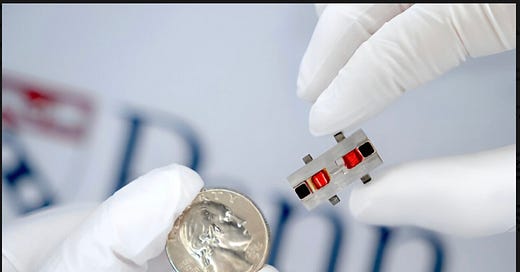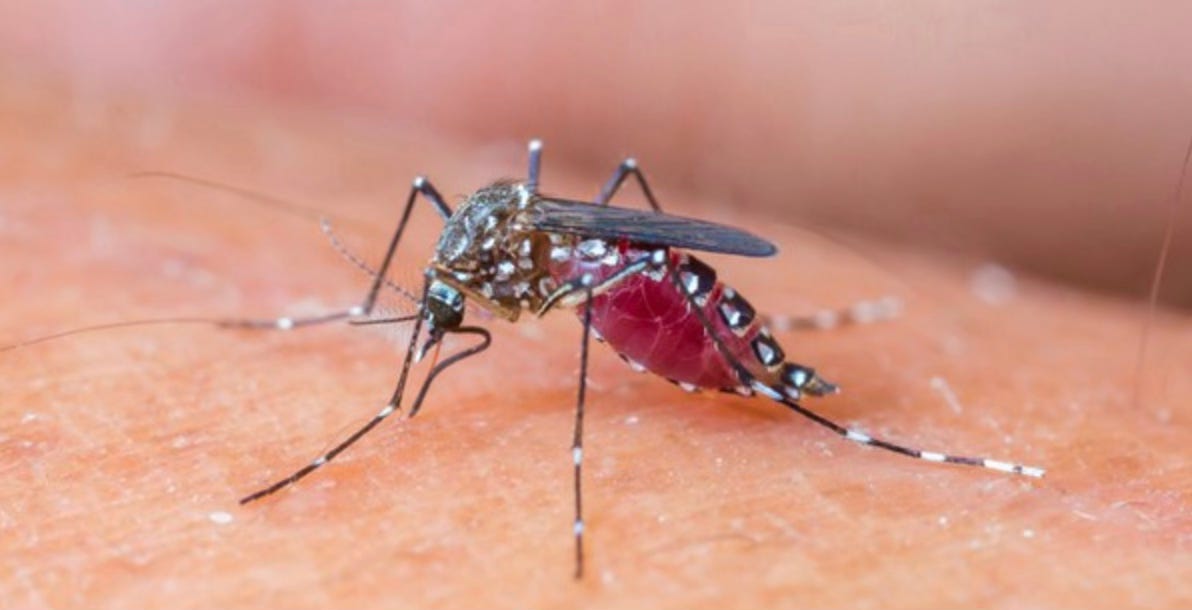This week we will examine another breakthrough that will take us one step closer to making 6G mobile phones a reality. We look at an alternative to Metal Organic Frameworks, Salty Organic Frameworks. They do the same job however are much cheaper due to the lack of need to use rare earth metals. We investigate a new quieter leaf blower and finally we discover how mosquitos decide who to bite.
The Next Generation of Wireless Communications
We regularly speak about 6G and the breakthroughs that are required to enable the next generation of communications equipment to be in our hands by 2030. There are many obstacles to overcome. A team at Penn State have now overcome one of the largest obstacles that has baffled researchers.
Only one billionth of one percent of the electromagnetic spectrum is suitable for wireless communication. There is a lot of demand from competing uses of the useful part of the spectrum making it extremely valuable. 3G, 4G and 5G has been using the bandwidths from 600 MegaHertz to 6GH. The band from 7GH to 24GH (known as FR3) is likely to be used for 6G wireless communications. This band is currently reserved for other commercial uses such as GPS, Satellite communications and the military.
The problem that the team at Penn State has overcome is by using the FR3 bandwidth for 6G, phones would require 100+ filters and many different switches to stop interference with frequencies reserved for other uses. The team developed a tunable filter to selectively filter out selected frequencies rather than separate filters for each frequency.
The filter uses yttrium iron garnet (YIG) a blend of yttrium, iron and oxygen that crates a magnetic spin wave in magnetic materials where electrons spin in a synchronized fashion. When exposed to a magnetic field the magnetic spin wave changes frequency. By adjusting the magnetic filed you change the frequency. The YIG filter achieves continuous frequency tuning across an extremely broad band of spectrum from 3.4GH to 11.1GH. This covers most of the bandwidths currently used for alternative commercial products.
The filter is tiny and uses little power making it suitable for use in phones. YIG was discovered in the 1950’s and YIG filters have existed for decades however the team has been able to make the filters 10 times smaller than current TIG filters. Another step towards faster downloading on our phones.
Salty Organic Frameworks
We have spoken about Metal Organic Frameworks several times. They have a highly porous structures made from metal ions and organic linkers. The unique structure has uses in gas storage and separation, chemical sensors, biomedicine and pollution control. Many new uses are emerging.rapidly. More than 90,000 types have been created to date. Unfortunately many use expensive rare earth metals.
A team at the University of Liverpool and the University of Southampton has used a computational technique called crystal structure prediction to work out how to make frameworks from salts called ammonium halides. These frameworks use halide node in place of metal ions and ammonium linkers. The team then adapted the technique to simulate the complex interactions between the halide nodes and various types of ammonium linkers. They screened many frameworks virtually to determine the best candidates to try to make in the lab.
The team used linkers which had 3 arms ending in a nitrogen group. The frameworks were produced in the lab and called non-metal organic frameworks. The team then used these new frameworks to capture iodine. Nuclear waste often contains radioactive iodine. They found that all 3 materials performed better than most metal organic frameworks.
The non-metal organic frameworks are easy to synthesize from common and therefore cheap materials providing an alternative to the extremely useful metal organic frameworks.
How do Mosquitoes choose who to bite?
I am one of the lucky people. I do not get bitten by mosquitos anywhere near as often as many others. Why do mosquitos mostly avoid me and bite those around me? Is my blood not attractive or tasty enough?
A team at Johns Hopkins School of Public Health has discovered the chemicals in the body odor produced by humans that attract mosquitos. Mosquitos are part of the fly family and mostly feed on nectar however females preparing to produce eggs need a meal with blood proteins.
The team was most interested in the behaviors of African malaria mosquitos as they promulgate a deadly disease. They wanted to compare the mosquitos smell preference across different humans and to observe their ability to track scents across distances during their most active hours of 10pm to 2am.
Unsurprisingly the team found that the mosquitos were attracted to some people more than others. The mosquitos were most attracted to airborne carboxylic acids which are produced by bacteria on the human skin and tend not to be noticed by humans. The team also found that the presence of eucalyptol, which is present in plants, deterred the mosquitos. This may be related to the individual diet of some of the participants in the study.
The discovery of the chemicals in different people’s body odor that attracts the mosquitos opens the way to the development of new repellents and lures that can be used in traps. This is vitally important in areas of malaria outbreaks. By the way, scrubbing your body with unscented natural soaps won’t remove the scents that attract mosquitos. You will just have to wait until science develops a better mosquito repellent.
Quieter Leaf Blowers
Like many of you working from home, my concentration is regularly disturbed by neighbors or contractors using extremely noisy leaf blowers to clean paths. A team of engineering students at Johns Hopkins University has tackled this problem head on.
The sound that a leaf blower makes is quite complicated. It contains a lot of different frequencies. Some frequencies are highly annoying to the human ear. The team was able to design an attachment that cuts the leaf blower’s noise almost like a silencer on a gun or a muffler on a car.
The product takes in a full blow of air and separates it. Some of the air comes out as is and part of it comes out shifted. The combination of these two sections make the blower less noisy. The shrill annoying sounds are reduced by 94% or 12 decibels making them unnoticeable. The overall leaf blower noise is reduced by 37% or about 2 decibels making the machine sound much quieter.
They describe the difference as being between a high pitched whistle and hearing what you might think of as wind noise. The noise is deeper and not as screechy or annoying to hear. The design has been patented and Black & Decker will start mass manufacturing and selling the product within the next two years. The team also hopes to apply their invention to other noisy appliances like vacuums and hairdryers.
Paying it Forward
If you have a start-up or know of a start-up that has a product ready for market please let me know. I would be happy to have a look and feature the startup in this newsletter. Also if any startups need introductions please get in touch and I will help where I can.
If you have any questions or comments please comment below.
I would also appreciate it if you could forward this newsletter to anyone that you think might be interested.
Till next week.






